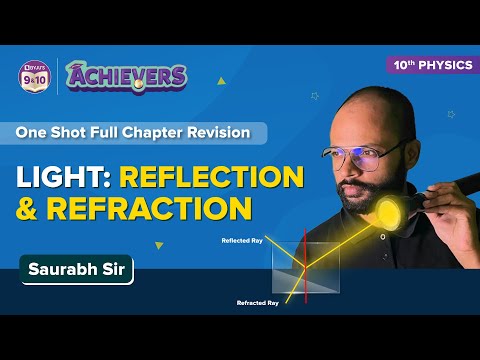A mirror is a transparent glass with a very thin reflective layer, and the back side of the glass opposite the incident is painted. A mirror forms the image of any object positioned in front of it by reflection. The incident light ray, also known as reflected ray, coming from the object gets reflected back. These reflected rays of light converge to form an image, and the generated image will be a real image.
In contrast, if the reflected rays diverge, the produced image is known as a virtual image. A mirror that has the shape of a segment cut out of a spherical surface is called a spherical mirror. Spherical mirrors are of two types:
1) Convex Mirror
2) Concave Mirror
The mirror equation or mirror formula is the relation between the object’s distance from the mirror, the focal length of the mirror and the distance of the image from the mirror.
Where,
f = focal length of the spherical mirror
v = the distance between image and mirror
u = the distance between object and mirror
Read More – Mirror Formula for Spherical Mirrors
To learn more about ‘Mirror Formula and Magnification’, watch the video below

Important Questions with Answers
1. What is the mirror formula for a spherical mirror?
The mirror equation or mirror formula is the relation between the object’s distance from the mirror, the focal length of the mirror and the distance of the image from the mirror.
Where,
f = focal length of the given spherical mirror
v = the distance between image and pole of the spherical mirror
u = the distance between object and pole of the spherical mirror
2. What is the focal length of a spherical mirror?
The focal length of a spherical mirror is the distance between the pole of the mirror and the focus point of the mirror.
3. Define sign convention rules for spherical mirrors.
- The object must be positioned in front of the mirror, which means that light from the object will approach the mirror from the left side.
- All distances parallel to the principal axis of the mirror are measured from the pole.
- Measured distances to the right of the origin along the positive X-axis are considered positive. In contrast, those measured to the left of the origin along the negative X-axis are considered negative.
- Distances measured perpendicular to and above the primary axis along the positive Y-axis are considered positive. And measured distances perpendicular to and below the principal axis along the negative Y-axis are regarded as negative.
4. What is the magnification formula of a spherical mirror?
The formula of the magnification of a spherical mirror is,
where, m = magnification of the spherical mirror, h’ = height of the image and h = height of the object
The magnification of the spherical mirror is also related to the object distance and image distance from the pole of the spherical mirror. It can be expressed as,
Where,
m = magnification
v = distance between image and pole of the mirror
u = distance between object and pole of the mirror
5. What is the refraction of the light?
Refraction can be explained as the bending of light when it travels from one transparent medium into another transparent medium.
6. What is the reflection of the light?
Whenever a light ray incident on a smooth polished surface, it gets bounced back; this is called the reflection of light.
7. What is meant by the object distance?
Distance between the object from the pole of the spherical mirror is called the object distance, and it is denoted by the letter ‘u’.
8. What is the principal axis of a spherical mirror?
The principal axis of a spherical mirror is an imaginary line that passes through the pole and the centre of curvature of the spherical mirror.
9. What are the uses of spherical mirrors?
According to the type of spherical mirror, they have various applications.
- Convex mirror – Convex mirror can be used in sunglasses, shaving mirrors, side view mirrors in vehicles, as a reflector in street lamps, surveillance mirrors, optical instruments such as telescopes etc.
- Concave mirror – Concave mirror can be used in astronomical telescopes, headlights of vehicles, solar furnaces, ophthalmoscopes etc.
10. Where can we use the mirror formula?
The mirror formula is used to calculate the size of the image, the value of magnification, and the distance between the image and the spherical mirror.
Practice Questions
- What are ‘u’ and ‘v’ in the spherical mirror formula?
- Who invented the spherical mirror?
- Is the mirror formula and lens formula the same?
- What is the radius of curvature of a spherical mirror?
- How does the mirror work?
|
Related Links |
Watch the video and revise all the important concepts in the chapter Light Reflection and Refraction Class 10

Stay tuned to BYJU’S for more exciting questions with solutions. Register for “BYJU’S – The Learning App” as well as for a wide variety of interactive, engaging physics-related videos.
